Gardening can be a rewarding hobby, especially when you enjoy the taste of fresh vegetables and fruits straight from your garden. Starting a garden can seem overwhelming, but it can be broken down into manageable steps. The first step is to pick the right location for your garden with suitable soil and enough sunlight.
When it comes to the size of your garden, starting small is better. Choose a few of your favorite vegetables to grow and buy three to five plants of each. Some easy vegetables for beginners include lettuce, green beans, radishes, tomatoes, zucchini, peppers, beets, carrots, chard, spinach, kale, and peas. You can also add flowers like marigolds to your garden to discourage pests and attract pollinators.
Timing is crucial when it comes to vegetable gardening. Different vegetables have different planting times. Cool-season vegetables like lettuce, broccoli, and peas can be planted in early spring and fall, while warm-season vegetables like tomatoes and peppers should be planted in late spring and summer.
Before planting, prepare your garden beds by clearing the ground of weeds and sod. You can either remove the sod by slicing it with a spade or use the lasagna gardening method, which involves layering newspaper and compost on top of the sod to smother it. It’s also important to test and improve your soil. Conduct a soil test to determine its nutrient levels and adjust accordingly by adding organic matter.
Once your beds are prepared, you can start planting. Choose vegetables and flowers based on your preferences and the amount of maintenance you’re willing to put in. You can start plants from seeds or buy transplants from a nursery. If starting from seeds, make sure to read the instructions on the seed packets and start them at the right time.
Watering is vital for the success of your garden. Ensure that your plants receive adequate water, especially during dry periods. It’s important to water at the right time, such as early in the morning or late in the afternoon, to minimize evaporation and prevent the growth of fungal diseases.
Key Takeaways
- Start by selecting a suitable location for your garden with adequate sunlight and good drainage.
- Begin small and choose easy-to-grow vegetables like tomatoes, carrots, spinach, and kale.
- Conduct a soil test to determine soil nutrient levels and add organic matter as needed.
- Choose between starting plants from seeds or buying transplants from a nursery.
- Watering your plants properly, at the right time, is crucial for their growth and development.
Choosing the Right Plants for Your Garden
When starting a garden, it’s crucial to choose the right plants based on your preferences and what will thrive in your area. Selecting beginner-friendly plants is also key to experiencing a successful and enjoyable gardening journey. In this section, we’ll discuss some must-have garden plants that are easy to grow and maintain, regardless of your experience level.
| Vegetables | Description | Benefits |
|---|---|---|
| Lettuce | A leafy green that is quick to mature and can be harvested multiple times in one season. | Rich in vitamins and minerals, easy to grow, and perfect for salads and sandwiches. |
| Green Beans | A warm-season vegetable that is prolific and easy to grow. | High in fiber, vitamins, and minerals, and can be eaten fresh or cooked. |
| Radishes | A cool-season root vegetable that matures quickly and is easy to grow. | High in vitamin C, fiber, and antioxidants, and adds a spicy crunch to salads and sandwiches. |
| Tomatoes | A warm-season fruit that comes in a variety of colors, sizes, and flavors. | High in antioxidants, vitamins, and minerals, and versatile for use in sauces, salads, and sandwiches. |
| Zucchini | A warm-season squash that grows quickly and produces heavily. | Low in calories, high in fiber, and can be used in a variety of dishes, including sautés, bread, and pasta. |
When selecting vegetables to plant, consider your growing zone and the time of year. It’s important to plant at the right time for optimal growth and harvest. It’s also important to note that some vegetables take longer to mature than others, so plan ahead accordingly.
Aside from vegetables, there are also many beginner-friendly garden plants to consider, such as marigolds, petunias, and impatiens. These annuals provide bright and cheerful blooms throughout the growing season, require minimal care, and attract beneficial insects to your garden.
Another option for a low-maintenance garden is to choose perennials, such as coneflowers, hostas, and daylilies. These plants come back year after year and require minimal watering and fertilization. They also provide beautiful foliage and blooms for your garden.
Overall, when choosing the right plants for your garden, it’s important to consider your preferences, growing conditions, and experience level. Selecting beginner-friendly plants and planting at the right time will ensure a successful and rewarding gardening experience.
Finding the Perfect Spot for Your Garden
Finding the perfect spot for your garden is crucial to ensure the success of your plants. Once you’ve selected your plants, it’s time to find the perfect spot in your yard for your garden.
You’ll want to choose a location that receives 6 to 8 hours of direct sunlight per day for most vegetables. Some leafy vegetables can tolerate partial shade. It’s important to note that the soil should drain well and not stay wet, as wet roots can lead to rot. If you have rocky soil, it’s advised to remove the rocks to promote healthy root growth. The chosen spot should also be stable and not prone to strong winds or excess foot traffic.
Additionally, the soil should be nutrient-rich, so it is recommended to mix in organic matter to help your plants grow. When starting a garden, it’s better to start small and only grow what you know you and your family will eat. A 10′ x 10′ garden in the ground or a 4′ x 4′ or 4′ x 8′ raised bed are manageable sizes for beginners. It is also important to leave enough space between plants for easy access and maintenance.
When choosing which vegetables to grow, consider what you and your family enjoy eating. Be realistic about how many vegetables your family will eat to avoid overplanting. It is also important to consider the availability of certain vegetables at your local grocery store. Some vegetables are far superior when homegrown, such as lettuce and tomatoes. It is advised to take care of your plants throughout the growing season, especially during the summer when tomatoes and zucchinis grow strongest. If you will be away during the summer, consider growing cool-season crops like lettuce, kale, peas, and root vegetables during the cooler months.
The best time to start your garden varies depending on your location and the specific plants you want to grow. It is recommended to consult the USDA Plant Hardiness Zone Map or contact your local county cooperative extension office to determine the best timing for planting in your area. Start by creating a map of your garden beds and rotate crops each year. Begin sowing seeds or planting transplants based on the recommended planting dates.
Lastly, prepare your planting beds by clearing the ground of weeds and sod. Test your soil and amend it with organic matter to ensure proper nutrient levels. When ready, start planting your chosen plants, either from seed or as transplants. Be sure to water your plants at the right time and stay attentive to their needs throughout the growing season.
By following these guidelines, you can find the perfect spot for your garden and enjoy the rewards of growing your own vegetables and flowers.
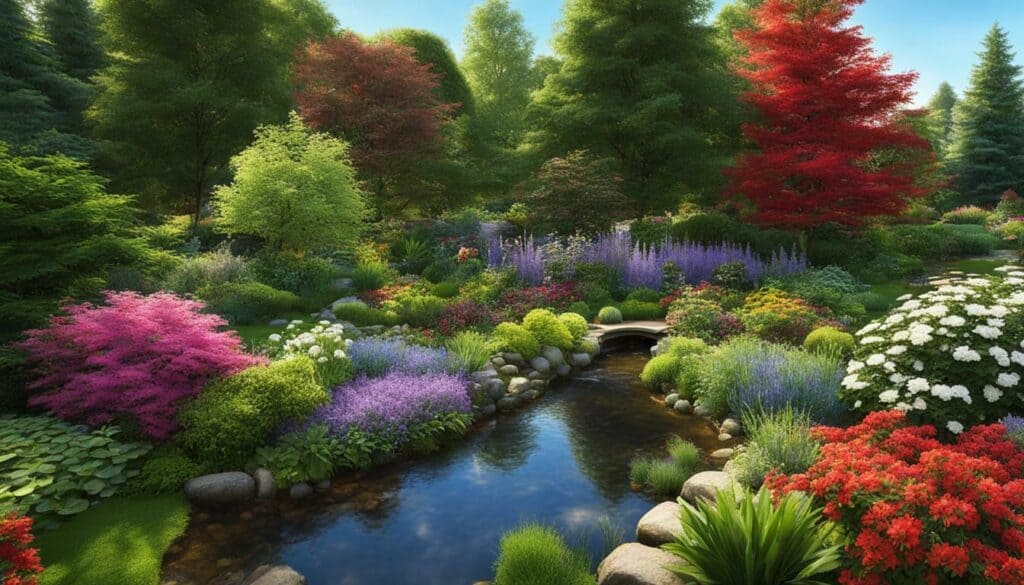
Preparing the Soil for Planting
Before planting your chosen plants, it’s essential to prepare the soil to ensure their successful growth. Tilling the soil is an important aspect of preparing it for planting. This process involves breaking up compacted soil and creating an environment that is more conducive to plant growth. It is best to till the soil when it is moist, but not too wet or dry, to avoid damaging the soil structure.
Incorporating organic matter into the soil is also crucial to ensure healthy plant growth. Organic matter can come in the form of compost, aged manure, or leaf litter, and it adds nutrients to the soil that plants need for proper growth and development. The addition of organic matter also helps improve soil texture and drainage, making it easier for plant roots to grow and access nutrients.
Rocky soil should be cleared of large rocks to allow for proper root growth. To do this, you can either pick them out by hand or use a rake or hoe to remove them. It’s also important to test the soil before planting to determine its nutrient content and pH level. This information can help you make informed decisions about what types of plants to grow and what types of fertilizers to use.
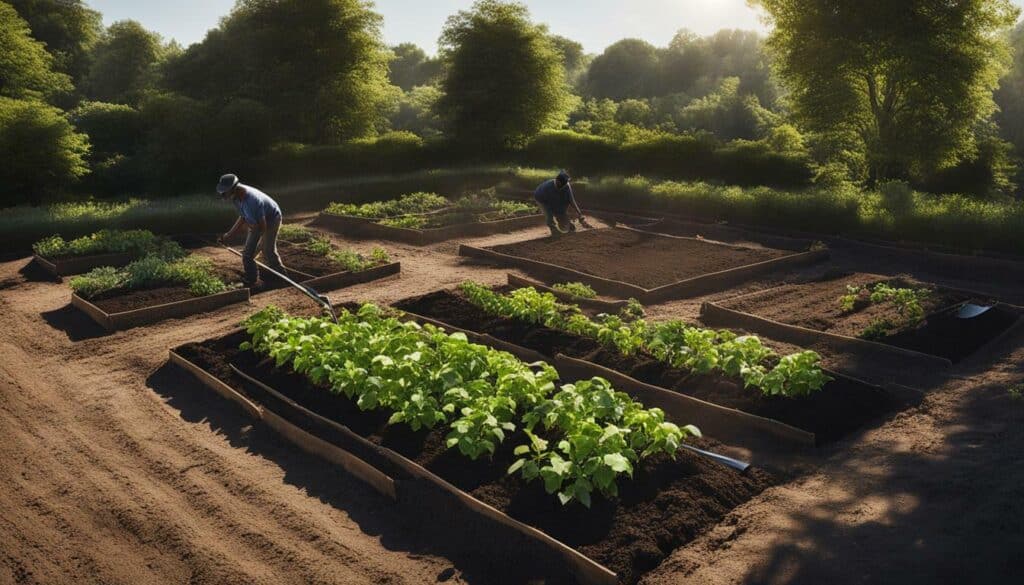
Remember to start small and plant only what you know you and your family will eat. The size of the garden depends on the available space and the number of plants you want to grow. Choose vegetables based on your preferences and the availability of produce in your area. Planting should be done at the appropriate time, with some vegetables being planted in cooler weather and others in warmer weather.
By following these steps and maintaining proper watering practices, you can ensure that your garden thrives and produces healthy, delicious crops.
Starting Seeds Indoors or Transplanting Young Plants
Once you have prepared the soil, it’s time to start growing your plants either by starting seeds indoors or purchasing young plants from a nursery. Starting seeds indoors is a great way to get a head start on the growing season and allows you to choose from a wider variety of plants. It also gives you more control over the growing conditions, ensuring optimal growth and development.
When starting seeds indoors, choose high-quality seeds from a reputable source. This will increase your chances of a successful harvest. Follow the instructions on the seed packet for planting depth and spacing, and use a high-quality seed starting mix.
If you prefer to purchase young plants from a nursery, be sure to select healthy plants with no signs of disease or pests. Look for plants that are well-rooted and have healthy foliage.
Timing is crucial when starting seeds or transplanting young plants. Different vegetables have different planting times, so be sure to consult a localized calendar to determine the best time to start seeds and transplant outdoors based on your area’s climate.
Before transplanting or starting seeds, clear the ground, test and improve the soil, and prepare the planting beds. This will ensure optimal growing conditions for your plants.

Watering at the right time is crucial for the success of your garden. Be sure to water your plants deeply and regularly, especially during hot and dry weather. A layer of mulch around your plants can also help to retain moisture in the soil.
By following these steps, you can successfully start your garden with either seeds or young plants and enjoy a bountiful harvest of fresh fruits and vegetables throughout the growing season.
Watering Your Plants for Proper Growth
Adequate watering is crucial for the proper growth and development of your garden plants. Proper watering practices ensure that plants receive the right amount of water without drowning or drying out. Here are some helpful tips to ensure that your garden thrives:
| Tip | Description |
|---|---|
| Water early in the morning or late in the evening | Watering during the cooler parts of the day minimizes evaporation and ensures that water reaches the plant’s roots before it is heated by the sun. Avoid watering your plants during the hottest parts of the day. |
| Water deeply and infrequently | Give your plants a good soaking once or twice a week, rather than watering them every day. This encourages deep root growth and prevents shallow roots that are susceptible to drying out. |
| Use a watering can or hose nozzle | Using a watering can or hose with a nozzle ensures water is directed at the base of the plant and isn’t wasted on leaves and flowers. |
| Avoid overhead watering | Overhead watering can promote the growth of fungal diseases and can cause flowers and leaves to rot. If possible, opt for drip irrigation or a soaker hose. |
Remember that different plants have different watering needs. Vegetable plants need more water during the hottest part of the day, whereas plants like succulents and cacti require less frequent watering due to their water-storing ability. Pay attention to your plants and adjust your watering schedule as necessary.
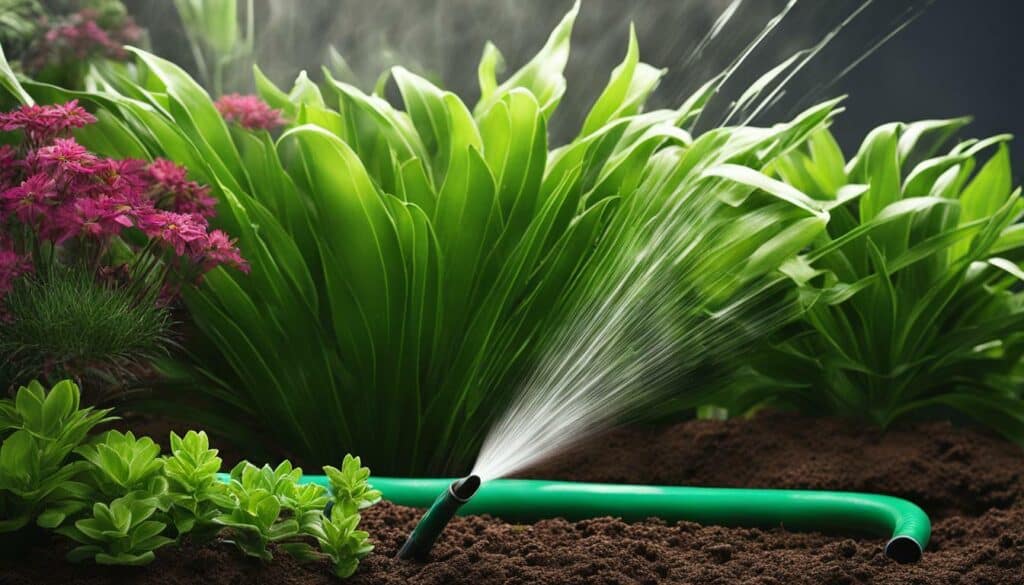
By following these watering tips and giving your plants the correct amount of water, you’ll ensure proper growth and development, leading to a healthy and bountiful garden.
Essential Vegetables for Beginners
If you’re new to gardening, starting with a few essential vegetables can be a great way to kickstart your green thumb journey. These easy-to-grow plants are perfect for beginners and can provide a bountiful harvest with minimal effort. Here are some of the top vegetables that you should consider planting in your garden:
| Vegetable | Description | Growing Tips |
|---|---|---|
| Lettuce | A leafy green vegetable that is packed with nutrients and can be harvested multiple times throughout the growing season. | Plant in well-draining soil and provide plenty of water. Harvest leaves when they reach 4-6 inches in length. |
| Green Beans | A versatile vegetable that is rich in fiber and protein, and can be eaten fresh or cooked. | Sow seeds directly in the soil after the last frost. Provide support for climbing varieties and keep soil consistently moist. |
| Radishes | A fast-growing root vegetable that adds a spicy kick to salads and sandwiches. | Sow seeds in early spring or late summer. Plant in well-draining soil and keep soil consistently moist. Harvest when bulbs reach maturity. |
| Tomatoes | A popular fruit that is rich in vitamins and can be used in a variety of dishes. | Plant in well-draining soil and provide support for indeterminate varieties. Keep soil consistently moist and provide 6-8 hours of sunlight per day. |
| Zucchini | A summer squash that is easy to grow and produces a high yield. | Plant in well-draining soil and provide consistent moisture. Harvest when the fruit is 6-8 inches in length. |
| Peppers | A versatile vegetable that comes in a variety of colors and flavors. | Plant in well-draining soil and provide 6-8 hours of sunlight per day. Keep soil consistently moist and fertilize every 4-6 weeks. |
| Beets | A root vegetable that is nutritious and easy to grow. | Plant in well-draining soil and keep soil consistently moist. Harvest when bulbs reach maturity. |
| Carrots | A popular root vegetable that is rich in vitamins and minerals. | Plant in loose, well-draining soil and keep soil consistently moist. Harvest when carrots reach maturity. |
| Chard | A leafy green vegetable that is packed with vitamins and minerals. | Plant in well-draining soil and provide consistent moisture. Harvest outer leaves when they reach 6-8 inches in length. |
| Spinach | A leafy green vegetable that is rich in iron and other essential nutrients. | Plant in well-draining soil and provide consistent moisture. Harvest outer leaves when they reach 2-3 inches in length. |
| Kale | A leafy green vegetable that is high in vitamins and antioxidants. | Plant in well-draining soil and provide consistent moisture. Harvest outer leaves when they reach 4-6 inches in length. |
| Peas | A legume that is rich in protein and can be eaten fresh or frozen. | Plant in well-draining soil and provide support for climbing varieties. Keep soil consistently moist and harvest when pods are full. |
These essential vegetables are easy to grow, beginner-friendly, and will provide you with a bountiful harvest. By starting with these plants, you can gain confidence in your gardening skills and explore more complex vegetables as you become more experienced.

Discovering Easy-to-Care-for Herbs
Adding herbs to your garden can not only enhance your culinary creations but also offer a beautiful and easy-to-care-for addition to your outdoor space. Herbs are perfect for beginner gardeners since they require minimal care and can be grown in a small space. Here are a few popular and beginner-friendly herbs to get you started:
| Herb | Care Requirements | Flavors |
|---|---|---|
| Basil | Full sun, regular watering, well-drained soil | Sweet, spicy, or citrusy |
| Mint | Partial shade, moist soil | Cool and refreshing, such as peppermint or spearmint |
| Parsley | Full sun to partial shade, moist soil | Grassy and earthy |
| Chives | Full sun to partial shade, well-drained soil | Onion-like |
These herbs can be grown in containers or in the ground and are ideal for garnishing dishes or adding flavor to your favorite recipes. Herbs can also be used to make teas, infused oils, and much more. With their aromatic scents and attractive foliage, these plants are sure to add a delightful touch to your garden space.

Beautiful Flowers for a Colorful Garden
No garden is complete without the addition of colorful flowers, and there are plenty of options that are both easy to grow and require minimal maintenance. Whether you prefer annuals or perennials, there are numerous popular garden plants that will add vibrant hues and sweet fragrances to your outdoor space.
Some of the easiest flowers to grow for beginners include marigolds, zinnias, and impatiens. Marigolds are known for their cheerful blooms, while zinnias come in a variety of colors and shapes. Impatiens are perfect for shady areas and bloom well into the fall season. These low-maintenance plants can be grown from seed or young plants bought at your local garden center.
Lilies are another popular choice for adding color to your garden. Asiatic lilies are easy to grow and come in a variety of colors and sizes. Daylilies are also a great option, as they require little maintenance and bloom for several weeks during the summer months.
Cosmos are a charming annual that produces delicate flowers in shades of pink, white, and purple. They are easy to grow from seed and can be sown directly in the garden after the last frost date.
For a touch of classic elegance, try growing roses. Some low-maintenance varieties include shrub roses, climbing roses, and groundcover roses. They are available in a range of colors and can be grown in containers or in the ground.
Petunias are another easy-to-grow annual that comes in a wide variety of colors. They love full sun and will bloom all summer long. They can be grown from seed or young plants bought at your local garden center.
Finally, if you want to attract butterflies and hummingbirds to your garden, consider planting salvia, bee balm, or butterfly bush. These easy-to-grow perennials produce colorful blossoms that feed and attract these beautiful creatures.
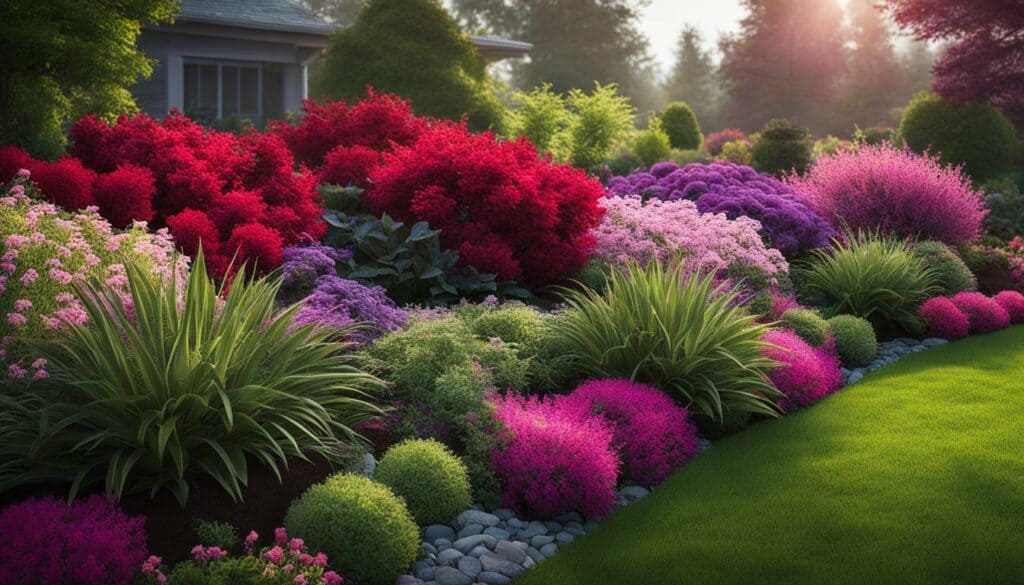
With these simple but beautiful flowers, you can create a colorful and inviting garden that requires minimal upkeep. So go ahead and add some color to your outdoor space and enjoy the natural beauty that these popular garden plants can bring!
Enhancing Your Garden with Additional Elements
Beyond the plants themselves, there are plenty of other elements you can incorporate into your garden to make it truly unique and appealing. From garden decor to accessories and other structures, the possibilities are endless.
Garden decor can include anything from statues and sculptures to fountains and birdbaths. These elements can add a touch of elegance and personality to your garden while also creating a focal point. If you’re looking for a more natural look, consider using rocks, stones, and pebbles to create a pathway or border for your garden beds.
Another way to enhance your garden is by adding accessories such as trellises and arbors. These structures not only provide support for climbing plants but also add height and dimension to your garden. Additionally, you can use outdoor lighting to highlight your garden at night, creating a warm and inviting atmosphere.
When selecting additional elements for your garden, it’s important to keep in mind the overall style and theme you’re aiming for. For example, if you have a modern garden, you may want to opt for sleek and minimalist decor, while a cottage-style garden may benefit from more rustic elements.
To get started, consider browsing garden centers or online shops for inspiration and ideas. You can also create DIY projects using recycled materials, such as pallets or old tires, to add a unique and sustainable touch to your garden.

In conclusion, adding additional elements to your garden can elevate its beauty and functionality, creating a space that you’ll enjoy for years to come. Whether you choose to incorporate garden decor, accessories, or structures, remember to plan your elements according to your garden’s style and theme. With thoughtful selection and placement, your garden will flourish and become a true oasis.
Conclusion
Starting a garden with basic plants is an excellent way to begin your gardening adventure and create a beautiful outdoor space that brings you joy. It’s important to consider what you want to plant and select a suitable location with adequate sunlight. Clearing the ground and improving the soil through testing and adding organic matter are also crucial steps to ensure healthy plant growth.
Preparing the planting beds, selecting the right plants, and properly watering them at the right time are key to successful gardening. There are many options for plants, including vegetables, herbs, and flowers, that are easy to grow and perfect for beginners. With proper care and attention, you can enjoy a bountiful harvest and vibrant blooms.
Remember to start small and not get overwhelmed. Choose plants that suit your preferences and growing conditions, and add elements like garden decor and accessories to create a personalized and inviting space. Gardening can be a rewarding and enjoyable experience, and by following these steps, beginners can start their gardens and enjoy the fruits of their labor.
So, what are you waiting for? Get started on your gardening journey today with these basic plants for your garden. Happy planting!
FAQ
Q: What are some beginner-friendly plants for a garden?
A: Some beginner-friendly plants for a garden include tomatoes, zucchini, basil, marigolds, and sunflowers.
Q: How do I choose the right plants for my garden?
A: When choosing plants for your garden, consider your preferences and the growing conditions in your area. Research which plants thrive in your climate and choose ones that suit your taste.
Q: How do I find the perfect spot for my garden?
A: Look for a location in your yard that receives 6-8 hours of sunlight per day. Clear the ground of weeds and sod, and improve the soil by adding organic matter if necessary.
Q: How do I prepare the soil for planting?
A: To prepare the soil for planting, you can till or dig the soil and incorporate organic matter like compost or manure to improve its fertility and structure.
Q: Should I start seeds indoors or buy young plants?
A: It depends on your preference and availability. Starting seeds indoors allows you to have more control over the growing process, while buying young plants can save time and effort.
Q: How often should I water my plants?
A: It is important to water your plants at the right time to ensure proper growth and development. Generally, most plants need to be watered when the top inch of soil feels dry, but this can vary depending on the specific plant and weather conditions.
Q: What are some essential vegetables for beginners?
A: Some essential vegetables for beginners include tomatoes, peppers, lettuce, carrots, and radishes. These plants are relatively easy to grow and provide a bountiful harvest.
Q: What are some easy-to-care-for herbs?
A: Easy-to-care-for herbs include basil, mint, rosemary, thyme, and parsley. These herbs require minimal maintenance and can add flavor and fragrance to your dishes.
Q: What are some beautiful flowers for a colorful garden?
A: Some beautiful flowers for a colorful garden include sunflowers, zinnias, marigolds, petunias, and pansies. These flowers come in various vibrant colors and can brighten up your garden.
Q: What additional elements can I add to my garden?
A: You can enhance your garden by adding elements such as garden decor, accessories like bird feeders or wind chimes, and structures like trellises or raised beds. These elements can add personality and create a more inviting space.
What Are Some Basic Plants I Can Start With in My Garden for Joy and Health?
Looking to plant a garden for joy & health? Start with some basic plants like tomatoes, herbs, and lettuces. Tomatoes are packed with nutrients and provide that fresh taste for your dishes. Herbs like basil and mint add flavor to meals and can even be used for natural remedies. Lettuces are easy to grow and perfect for salads.
Source Links
- https://www.almanac.com/vegetable-gardening-for-beginners
- https://www.realsimple.com/home-organizing/gardening/outdoor/month-by-month-vegetable-gardening-guide
- https://www.bhg.com/gardening/yard/garden-care/ten-steps-to-beginning-a-garden/
- https://growinginthegarden.com/gardening-for-beginners-how-to-start-a-garden-in-8-simple-steps/
- https://www.provenwinners.com/learn/right-plant-right-place
- https://www.realhomes.com/advice/how-to-choose-plants-for-your-garden
- https://www.gardenersoasis.com/pick-the-right-plants/
- https://www.almanac.com/where-put-vegetable-garden
- https://www.gardensthatmatter.com/choose-garden-location/
- https://morningchores.com/vegetable-garden-location/
- https://www.almanac.com/soil-preparation-how-do-you-prepare-garden-soil-planting
- https://www.homedepot.com/c/ai/how-to-prepare-soil-for-a-garden/9ba683603be9fa5395fab90dd5b2e0e
- https://www.planetnatural.com/garden-soil/
- https://www.swansonsnursery.com/blog/how-to-start-seeds-indoors
- https://www.almanac.com/content/starting-seeds-indoors
- https://www.gardenbetty.com/the-no-brainer-guide-to-starting-seeds-indoors/
- https://www.longfield-gardens.com/article/how-to-water-your-plants
- https://www.almanac.com/when-water-your-vegetable-garden-watering-chart
- https://www.hgtv.com/outdoors/gardens/planting-and-maintenance/the-proper-way-to-water-your-garden
- https://www.almanac.com/content/10-easy-vegetables-grow-seed
- https://getbusygardening.com/easy-to-grow-vegetables/
- https://shiftingroots.com/10-easy-vegetables/
- https://www.gardenary.com/blog/how-to-start-an-herb-garden
- https://www.gardenary.com/blog/the-ultimate-guide-to-growing-herbs
- https://www.daviddomoney.com/how-to-grow-a-beginners-herb-garden/
- https://www.gardendesign.com/flowers/easy.html
- https://www.backyardgardenlover.com/colorful-flowers-for-your-garden/
- https://www.familyhandyman.com/list/49-colorful-plants-to-brighten-up-your-landscape/
- https://southernlivingplants.com/plan-your-garden/6-ways-to-improve-your-garden/
- https://foyr.com/learn/best-home-garden-ideas/
- https://www.idealhome.co.uk/garden/garden-ideas/easy-garden-ideas-202397
- https://www.c82.net/twining/conclusion/
- https://extension.okstate.edu/fact-sheets/basic-plant-care-understanding-your-plants-needs.html
- https://www.betterhealth.vic.gov.au/health/healthyliving/gardening-for-children

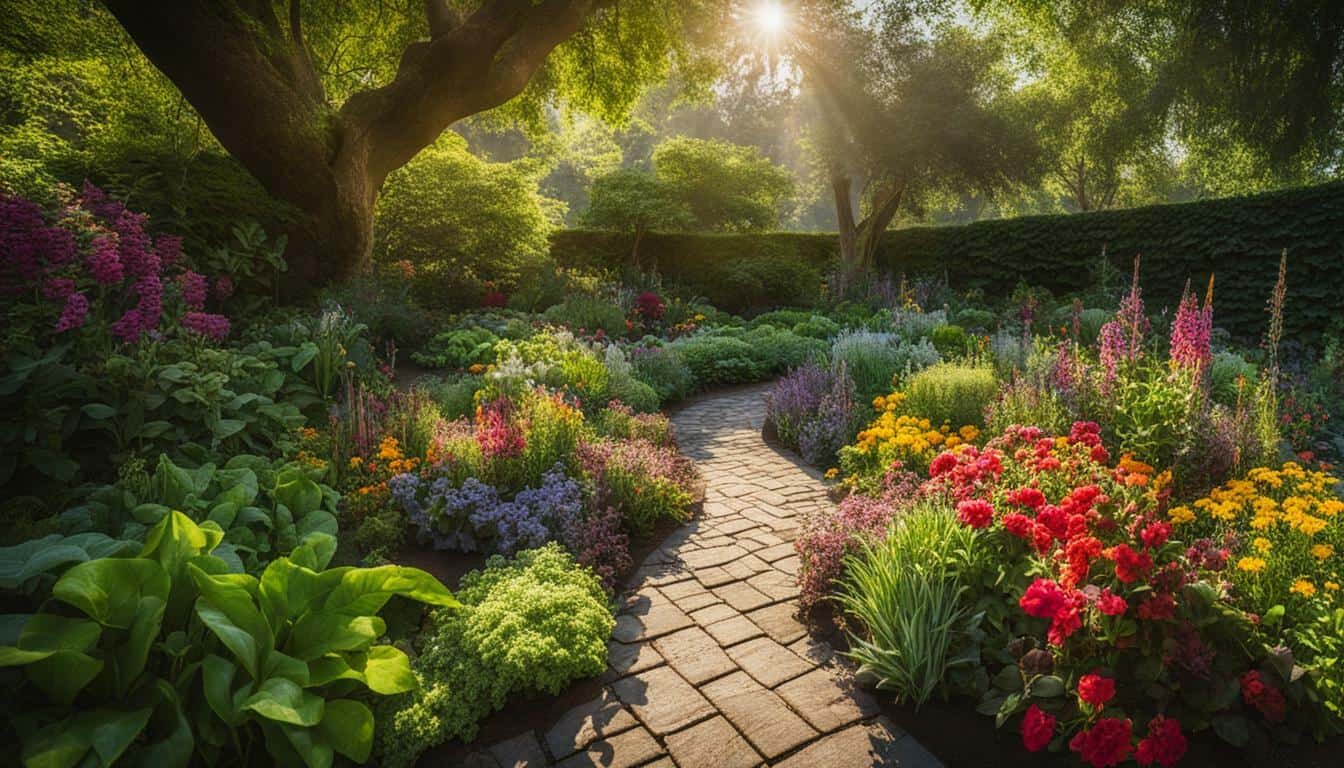



Leave a Reply